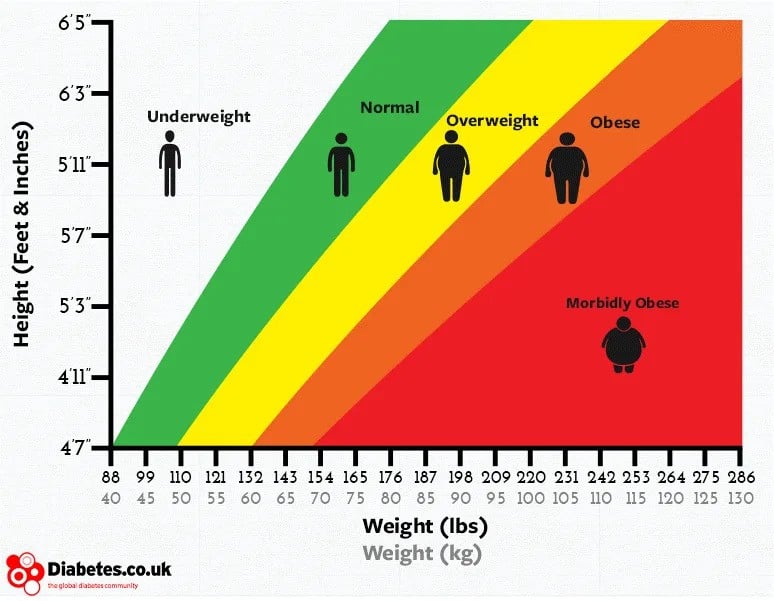Using the BMI calculator
Calculate your BMI and type 2 diabetes risk by entering your height (in feet and inches) and weight (in either pounds or kilograms), and see if you are underweight, normal weight, overweight or obese.
- You may also be interested in our BMR calculator and Waist to Hip ratio calculator.
Using your BMI
| BMI | Meaning |
|---|---|
| Below 18.5 | Underweight |
| 18.5 to 24.9 | Healthy weight |
| 25 to 29.9 | Above Overweight |
| 30 and above | Obese |
Once you have calculated your BMI look at the table to determine which category you are in; underweight, healthy weight, overweight or obese. This information can be helpful for a range of reasons, including a higher BMI is known to be associated with an increased risk of developing type 2 diabetes and other health conditions such as sleep apnoea. However conditions such as type 2 diabetes can also develop in people with a normal BMI. So it is important to remember that BMI is just an indicator of health.
BMI formula
The calculation for BMI was invented by Adolphe Quetelet, a Belgian mathematician born in 1796. He proposed that people’s weight could be classified relative to an ideal weight for their height. To this day, Body Mass Index is also referred to as the Quetelet index. BMI (kg/m 2 ) = mass (kg) / height (m) 2
BMI graph
BMI can also be determined using a chart that depicts BMI as a function of mass and height. 
![]()
Is BMI an accurate predictor of health?
Because of how BMI is calculated it cannot differentiate between weight from muscle and weight from body fat. Those with a high proportion of muscle (for example, athletes) may have a very high BMI, whilst having a lower amount of body fat. Therefore in this group, a higher BMI is not a useful indication of their health status. Also, some critics argue that age should be taken into consideration when deciding on what BMI is healthy for a person. Most recently, waist-to-hip has been suggested as a better indicator of health than BMI. You can read more about the argument against BMI.



